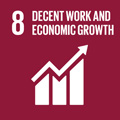- Docente: Francesca De Crescenzio
- Credits: 6
- SSD: ING-IND/15
- Language: Italian
- Teaching Mode: In-person learning (entirely or partially)
- Campus: Forli
- Corso: Second cycle degree programme (LM) in Nautical Engineering (cod. 5947)
-
from Sep 16, 2025 to Dec 17, 2025
Learning outcomes
At the end of the course, students possess the skills for building a design process and of computer-based design and geometric modelling of yachts, with a specific focus on interior fittings. In particular, nautical design concepts are applied to the use of modern computer-based design techniques, including rendering, virtual environments, augmented, mixed and virtual reality.
Course contents
The Yacht Design and Interior course consists of two parts. The first part, methodological, introduces methods for the conceptual design of industrial products with a special focus on User Centred Design and Sustainable Design. The second part, of a technological nature, focuses on advanced modelling tools, virtual and physical prototyping and in particular on NURBS geometric modelling systems for the generation of free form surfaces, Additive Manufacturing systems for the realisation of prototypes, Reverse Engineering techniques for the survey of surfaces and Virtual Reality for the immersive and interactive visualisation of digital mock-ups of interiors in 1:1 scale.
Readings/Bibliography
Downloadable teaching material from the https://virtuale.unibo.it/ platform is provided in class.
Teaching methods
Theoretical lectures. Analysis of classroom case studies on the workshop model. Performance of CAID exercises on NURBS modelling in the computer room. These exercises are based on the use of Computer Aided Design programmes. Demonstration exercises in the Prototyping Laboratory and Virtual Reality Laboratory. Regular attendance is recommended.
Educational seminars with professionals and companies specialising in the nautical sector and company visits are organised.
Assessment methods
Each student is assigned a case study to which the topics covered in the course are applied during the course. The final examination consists of the presentation of the completed project and a single interview during which two questions are asked on the theory topics in the syllabus.
The final grade is in thirtieths and is obtained from the result of the final test and the level of correctness of the answers given to the theory questions.
Teaching tools
3D scanning devices in the Virtual Reality laboratory:
FDM and Polyjet rapid prototyping machines.
Coordinate Measuring Machine Piezoelectric Digitiser Roland Picza PIX30.
CAID (Computer Aided Industrial Design) software - Rhinoceros 3D 8.0;
Reverse Engineering software;
Additive Manufacturing software.
Virtual Reality Hw and Sw systems
Office hours
See the website of Francesca De Crescenzio
SDGs


This teaching activity contributes to the achievement of the Sustainable Development Goals of the UN 2030 Agenda.
